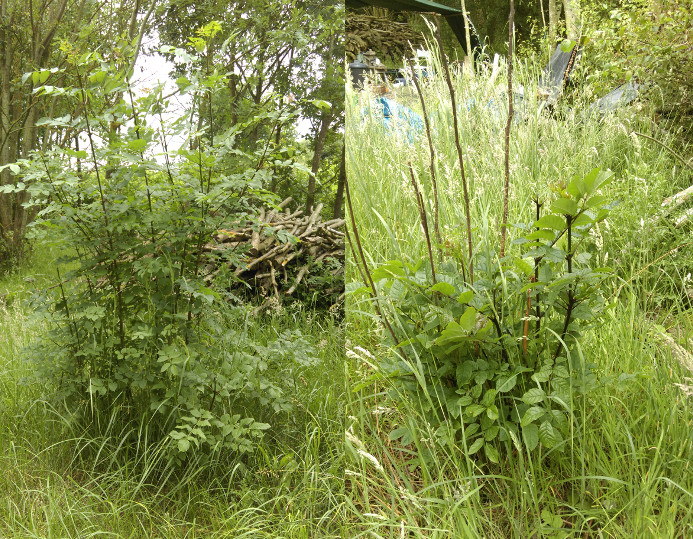
Two coppiced ash trees – no apparent ash dieback (L), recovering from ash dieback? (R)
About eighteen months ago I cut two small ash trees down as part of an effort to make some space for our embryonic charcoal business. These had both been planted in our small wood, Bottoms’ Corner, in February 1999, and had reached a diameter of about fifteen centimetres or so. Their absence meant I could bring cut wood into the area by driving over the cut stumps. Last spring I watched both throw up several vigorous new stems apiece.
Sometime in mid-summer however, one of the ashlings suddenly succumbed to Chalara ash dieback. All the leaves wilted seemingly overnight and the new stems darkened over the course of the next few weeks, leaving the tree, to all intents and purposes, dead. Its neighbour however carried on regardless – healthy and robust, through the summer and into the autumn, losing its leaves in a very ordinary kind of way.
Spring 2018 saw a new set of beautiful, vivid green leaves on the apparently unaffected tree and, to my surprise, new growth from the old stump of the individual I had thought dead. Now, in June 2018, the ‘dead’ tree is growing on without any noticeable effects from its close shave with ash dieback.
Now I’m not saying this proves anything. The more pessimistic tree experts I’ve spoken to about Chalara over the last couple of years have suggested that trees that don’t die immediately will be caught soon enough, in another bout of the same fungus or, weakened by exposure to the infection, taken by other fungal or viral diseases.
I remain optimistic. Ash is such a weedy plant in the UK that it must have a very diverse genetic base. That being the case, I hope there will be plenty of immunity in the population, allowing lots of individual trees to survive the current epidemic. Perhaps my healthy tree is one of these. Whilst a huge number of ash tree deaths seems inevitable and the effect on the landscape will be pretty dramatic, perhaps this will be short-term and ash will recolonise its old haunts within just a few decades; a mere blink in the time scales in which trees and woodland tend to think.
I’ll keep an eye on my pair of trees and report back on their progress. Of course, if they survive, they will be in the way, but I’m just going to have to work around them.
